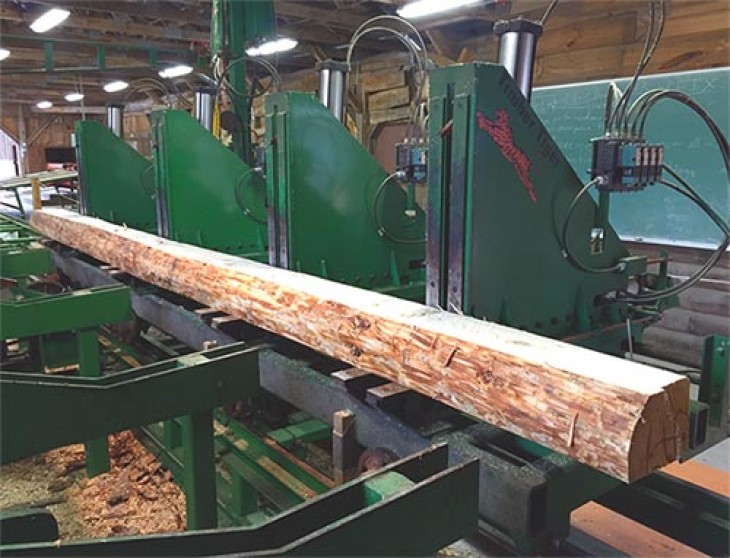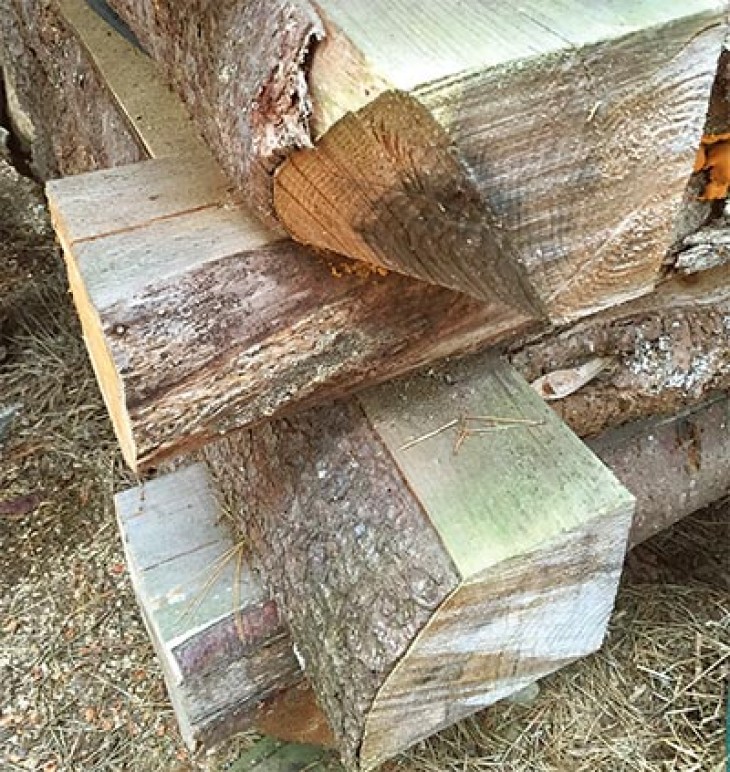In college, I spent a summer building hand-hewn Adirondack lean-tos. The work required both precision and persuasion. We’d chisel perfect saddle notches, which often meant rolling the log in place a dozen times before the boss gave us the nod that we were good to take out our sledgehammers and spikes and “drive ’er home.” The customers who took the time to watch us work never balked at the price, and often used flattering words such as “art” to describe our woodcraft. A few years later, I started a lean-to and cabin manufacturing business that let potential buyers participate in building their own log structures in exchange for reduced rates. It was an educational experience for them, and for me. In many cases, it was simply too much work and too much time for people to commit to. Add in blackfly season and a culture of instant gratification, and it was clear that I needed a new business strategy.
The answer was to use D-logs, sawn on three sides, with the exterior side of the log retaining its natural curvature. The primary benefit of this pre-processed building material is that it allows you to build a log structure by simply stacking the logs – no coping, no fussing. While it may not represent the same sort of craftsmanship that hand-coping does, it takes about one-fifth the time to complete a building.
Another benefit of using D-logs is that you don’t need to start with uniformly-sized logs for building. In fact, large logs can be sawn to produce multiple D-logs of the same dimensions. The two most standard heights for D-logs are six inches and eight inches. The width of the logs varies more based on taper and curvature, so as a general rule you’ll want to start building with your widest logs at the bottom. The most common method for laying up D-logs is called “butt and pass,” where you alternate your corner (pass) logs with each course. To connect each course and add rigidity to the building, use coated lag screws that can be countersunk. If you’re looking to make your log structure weathertight, consider using rubber weather-stripping or foam backer rod between each course. The final touch is chinking, which can be natural such as oakum, or a commercially available synthetic chinking material.




